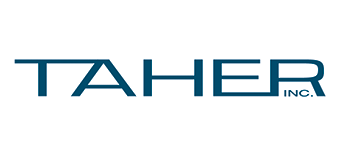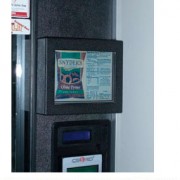CULINARY CENTER HOLDS KEY TO WINNING SALES
The company’s culinary center and its constant focus on freshness and quality has been an important selling  point for the vending business. Food accounts for 8 to 10 percent of the total vending sales.
point for the vending business. Food accounts for 8 to 10 percent of the total vending sales.
Taher’s culinary center, a 30,000-square-foot building in Plymouth, Minn., about 10 minutes from its main headquarters in Minnetonka, prepares hundreds of thousands of meals per day.
The USDA certified commissary makes meals daily for the schools, senior dining centers and vending.
Freshly cooked meats, vegetables, breads, sauces, and soups are packaged by hand, then frozen and stacked in the warehouse, from where they are shipped to schools, senior dining centers and corporate dining locations. The foodservice deliveries are made in refrigerated box trucks.
All vend products are delivered by dedicated vending trucks with temperature controlled compartments.
ONGOING CULINARY TRAINING
The menu for the foodservice divisions – corporate dining, schools and senior centers – provides the basis for the vend food menu.
Taher has one of the most extensive menus available in the Twin Cities, including a wide range of ethnic offerings. The company prides itself on the fact that its 14 chefs travel overseas twice a year to learn new recipes.
The company recently acquired a gelato manufacturer that produces authentic gelato, a dessert that is similar in taste and texture to custard.
All packaged products include ingredient and nutrition information. The company prints its own labels using a thermal printer.
Mark Augustine, the culinary operations manager, oversees the menu for all the divisions. The company solicits feedback from customers by conducting onsite surveys and from its Internet Website.
The commissary allows the company to offer catering to its customers. Sales people oftentimes offer customers catering in lieu of commissions.
While fresh food is a key selling point, Taher also has frozen food machines for locations that cannot justify the service frequency that a refrigerated machine requires. “People want an option,” Shawn Taher said. “Unfortunately, sometimes the fresh food machine just doesn’t work out.”
FOCUS ON TECHNOLOGY
Shawn Taher oversaw the installation of MEI Easitrax software in the vending division two years ago. The Easitrax handhelds, being DEX capable, have improved the efficiency of the route management, he noted. All  drivers use DEX handhelds.
drivers use DEX handhelds.
Ken Ruth, supervisor of vending operations, makes all product selections based on daily sales reports. The totes are filled in the warehouse daily by the warehouse staff. Drivers simply load the totes onto the trucks.
The drivers, who are paid on commission, have not objected to this system as it has allowed them to focus on servicing machines.
“You (management) can tell exactly what’s selling and what’s not,” noted Ruth. He said it is important to carefully track the non-core items since there is more account variance in these items. The Easitrax reports make it easy to track item-level sales by location.
Some accounts want 25 percent of the selections to be “Sensible Choice” items.
One reason the company chose MEI was the fact
that the Easitrax system supports remote machine monitoring and cashless vending, two areas they anticipate expanding into.
The company has operated several debit card systems in its school division. “Schools have been one of the first groups to get on that type of system,” Shawn Taher noted. They began experimenting with credit card readers on vending machines more than a year ago.




